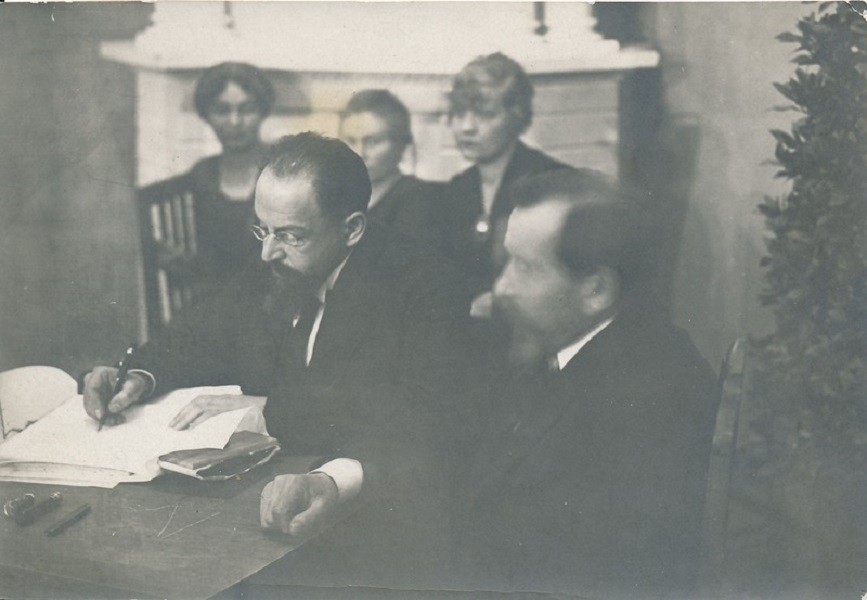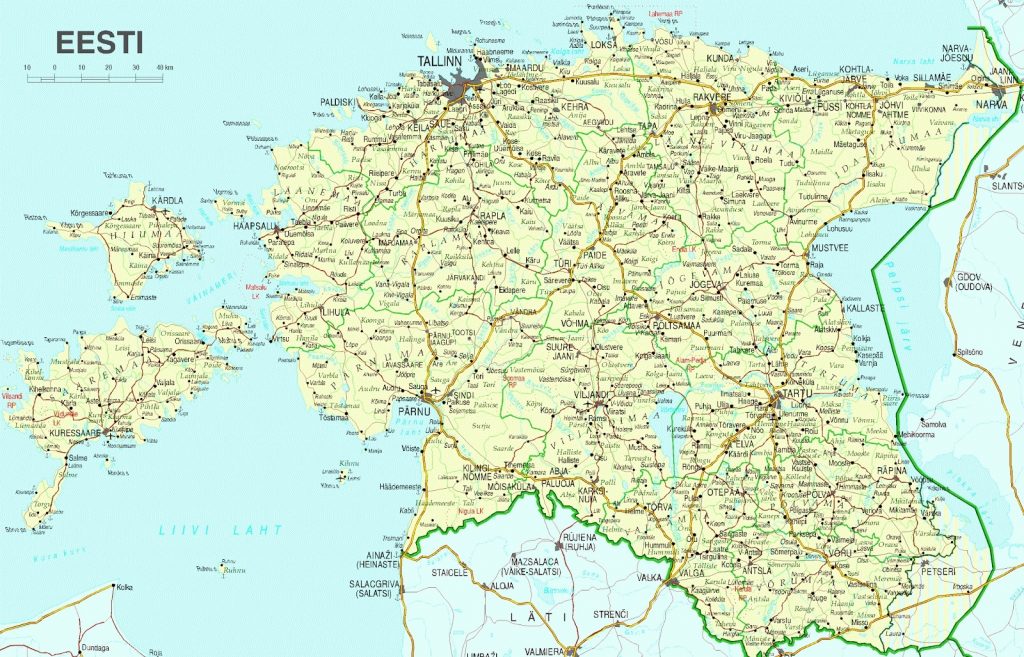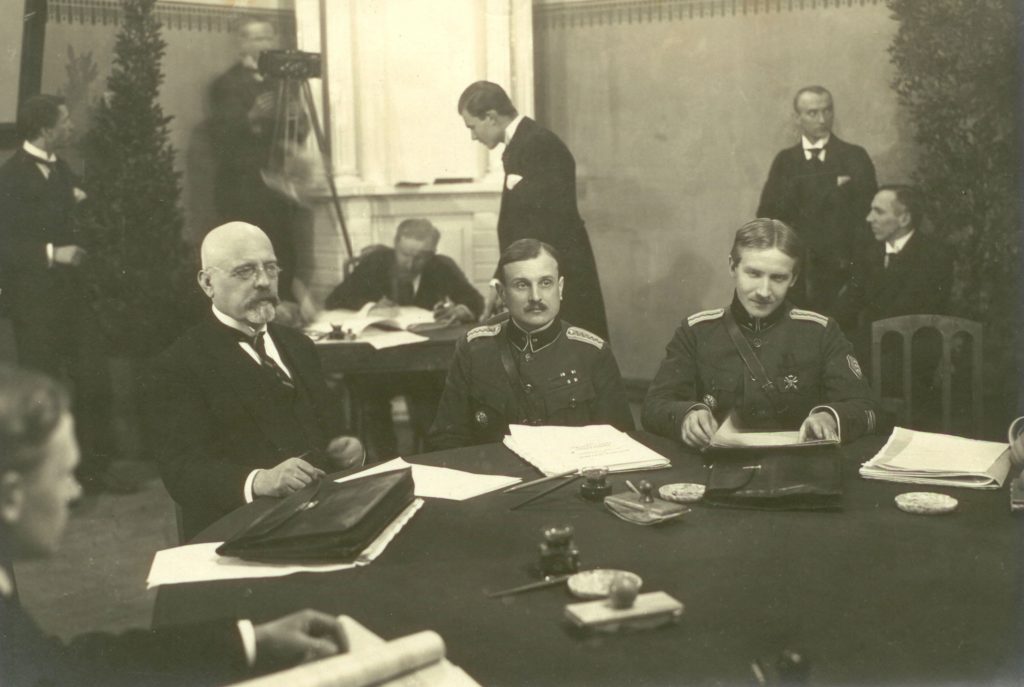On 2 February, Estonia commemorates the Tartu Peace Treaty that ended the Estonian War of Independence, established the country’s eastern border and obligated Soviet Russia to recognise Estonian independence – the fact the Soviet Union ignored only 20 years later.
The Tartu Peace Treaty, signed on 2 February 1920, was the treaty that ended the Estonian War of Independence that had started in November 1918, a few months after Estonia had declared independence on 24 February 1918. It all happened in the final months and the aftermath of the First World War when, after the capitulation of Imperial Germany, on 28 November 1918 the Soviet forces entered Estonia with the aim of reoccupying the newly independent country.
The war lasted for a year and two months with the Estonian forces consisting mainly of volunteers, and also help from Finland, the United Kingdom and the so-called White Russians – staunch anti-communists that fought the Bolsheviks in the Russian Civil War.
On 19 November 1919, the new Estonian government of Jaan Tõnisson decided to restart talks with Soviet Russia. The negotiations began on 5 December, with the main point of dispute being territorial issues. Talks continued through December, with both sides pressing their territorial demands, while heavy fighting continued at Narva. The peace treaty was finally concluded on 31 December 1919, and the ceasefire came into effect on 3 January 1920.
Estonia alone will determine its future
That peace treaty became an official document in Tartu on 2 February 1920 when Jaan Poska, the Estonian statesman who was leading the Estonian delegation, and Adolf Joffe, the Russian diplomat and the leader of the Russian delegation, signed it. The treaty established Estonia’s eastern border, and Soviet Russia recognised the independence of the Republic of Estonia in perpetuity.
The instruments of ratification of the treaty were exchanged in Moscow on 30 March 1920 and the treaty entered into force.

“On the basis of the right of all peoples freely to decide their own destinies, and even to separate themselves completely from the State of which they form part, a right proclaimed by the Federal Socialist Republic of Soviet Russia, Russia unreservedly recognises the independence and autonomy of the State of Estonia, and renounces voluntarily and for ever all rights of sovereignty formerly held by Russia over the Estonian people and territory by virtue of the former legal situation, and by virtue of international treaties, which, in respect of such rights, shall henceforth lose their force. No obligation towards Russia devolves upon the Estonian people and territory from the fact that Estonia was formerly part of Russia,” the Article 2 of the peace treaty said.
“Today is the most important day of the past 700 years for Estonia, because today, for the first time, Estonia alone will determine the future fate of its people,” Jaan Poska said after the signing.
However, as if predicting the future, Poska was also cautious. “Now, as the peace treaty is yet to be complied with and the war is raging all around us, we must not only attempt to maintain our military power, we must make every effort to increase this power,” he said in the conclusion of his presentation on the peace treaty. “Because no country located next to such menacing neighbours can be confident in its independence, it must be alert at all times. Therefore, I believe I am not wrong in saying, ‘Let us savour peace but let us preserve and increase our military might’.”
The Tartu Peace Treaty comprises 20 articles and in addition to ending the state of war it also includes articles on the recognition of the Estonian state, covering border, security, economic, social and traffic policies. According to it, Russia recognised Estonian independence de jure, renouncing voluntarily “for ever all rights of sovereignty formerly held by Russia over the Esthonian people and territory”. The Treaty of Tartu was also the first international act recognising the Soviet government.

Russia soon forgot about the Tartu Peace Treaty
Estonia was freed from all obligations towards Russia, while Russia was obligated to return the property that had been evacuated from Estonia; Estonia was also granted 15 million gold roubles from the Russian gold fund.
According to the treaty, every Estonian living in Russia had the right to move to Estonia. Based on that provision, 38,000 Estonians opted for the Estonian citizenship (at the end of the War of Independence, there were about 320 Estonian settlements or centres and around 190,000 Estonians in Russia).
Estonia’s peace treaty with Russia was the first international act that mentioned the right of peoples to decide their own destiny. Therefore, both the Treaty of Tartu as well as other treaties between Russia and its western neighbours that were modelled on it constituted an important step towards enshrining the nations’ right to self-determination in international law.
Of course, even though Soviet Russia had recognised the independence of the Republic of Estonia in perpetuity, the Soviet Union soon forgot that detail. In 1940, the Soviet Union forcibly and illegally occupied the Republic of Estonia, and after a brief German occupation during the Second World War, in 1944 reoccupied it.

No valid border treaty to this day
After the Soviet Union had occupied Estonia again, it changed back the eastern border of the newly-founded “Estonian Soviet Socialist Republic” – and the same border is in place today. Even though the Tartu Peace Treaty, according to the international law, has always remained in effect, the Russian Federation – the continuator of the Soviet Union – has never recognised it and never returned the parts of land in northeastern and southeastern corners of Estonia.
In May 2005, the two countries did sign a border treaty where Estonia conceded the still-occupied territories to Russia, but after the ratification of the treaty in the Estonian parliament, the Russian Federation withdrew its signature, pointing to the preamble of the ratification act of Estonia that mentioned the Tartu Peace Treaty.
The two countries managed to sign the border treaty again on 17 February 2014; however, to this day, it hasn’t been ratified by either of the countries, making Estonia the only state in the European Union that shares a land border with Russia and doesn’t have a valid border treaty with it.

Pioneering significance in the international law
“The Tartu Peace Treaty had a pioneering significance in the global system of international law because it was the first international act in the world that explicitly cited the concept of the peoples’ right to self-determination,” Urmas Reinsalu, the then Estonian foreign minister, said on 2 February 2020, marking the 100th anniversary of the treaty. “The Tartu Peace Treaty, as well as the treaties between Russia and its neighbours Lithuania, Latvia, Finland and Poland that used it as a template, constituted a crucial step towards peoples’ right to self-determination becoming a part of international law.”
The former foreign minister emphasised that the peace treaty is still valid. “The position of the Republic of Estonia has been and remains clear: the Tartu Peace Treaty is valid, and it remains unchanged from the perspective of our statehood by the fact that it was violated by the legal predecessor of the Russian Federation, the Soviet Union with its illegal annexation of the Republic of Estonia in 1940,” Reinsalu said.
Finland and Soviet Russia also signed a peace treaty in Tartu
Perhaps unknown also to many Estonians, Finland and Soviet Russia also signed their own Treaty of Tartu (“Tarton rauha” in Finnish) on 14 October 1920, after negotiations that lasted nearly five months.
The treaty confirmed the border between Finland and Soviet Russia after the Finnish civil war and Finnish volunteer expeditions in Russian East Karelia. The treaty was signed in Tartu at the Estonian Students’ Society building. The treaty was broken by the Soviet Union in 1939, when it started the Winter War against Finland.

